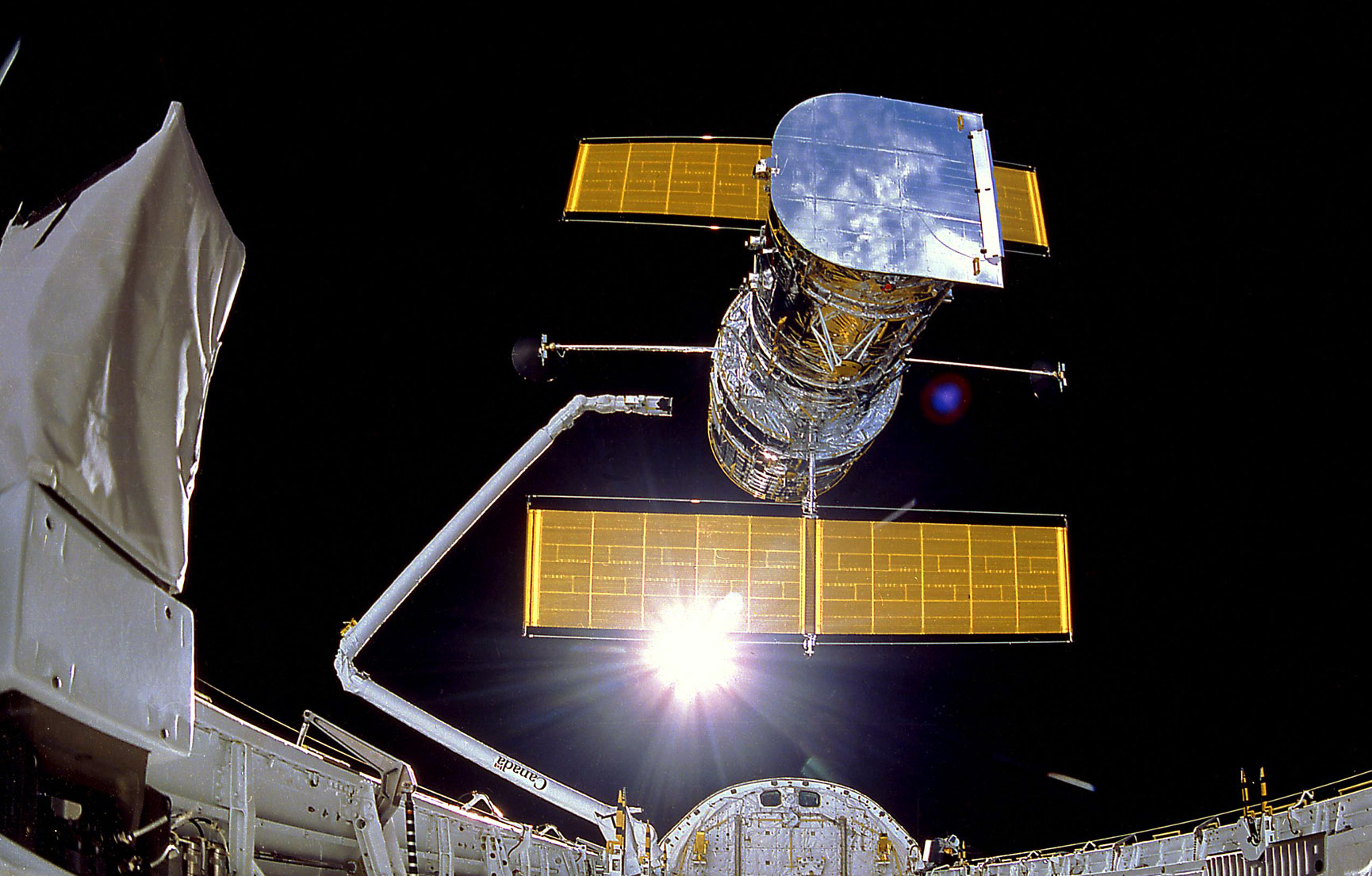The Hubble Space Telescope has made more the 1 million observations since its mission began in 1990, however, its origins date much further back in time.
The birth of an idea of a space-based observatory
The history of the Hubble Space Telescope traces back to 1946 in a paper by Lyman Spitzer, a professor and researcher at Yale University, titled “Astronomical advantages of an extraterrestrial observatory”.
In the report Spitzer pointed out the advantages of a space-based observatory over ground-based telescopes.
The first advantage was that angular resolution (the ability to distinguish small details of an object) would not be limited by the turbulence in the atmosphere, which blurs and distorts light coming from stars.
Secondly, he highlighted how a space-based observatory would be able to observe infrared and ultraviolet light much better than ground-based telescopes, because these rays are absorbed by the atmosphere.
A space telescope would allow scientists to accurately measure the X-rays emitted from high-temperature phenomena in stars and other objects.
Spitzer was subsequently asked to head a National Academy of Science Ad Hoc Committee on the Large Space Telescope.
In 1966 they had their first meeting, after which the group carried out numerous studies on the potential uses of a large space-based telescope.
Three years later, in 1969, the committee called for the construction of a space-based telescope in a report titled “Scientific Uses of the Large Space Telescope”.
In their report the committee said that an orbital telescope would make a “dominant contribution to our knowledge of cosmology.”
Support from NASA
The only agency that could execute the National Academy’s recommendation was NASA. Therefore, for the concept to become a reality the telescope would need the space agency’s support.
NASA had studied the potential of space telescopes, although with smaller mirrors than those proposed by the National Academy of Sciences.
It wasn’t until 1971 that NASA’s Acting Administrator, George Low, finally gave the green light for the Large Space Telescope Science Steering Group to conduct feasibility studies.
This decision was largely driven by the success of NASA’s OAO program and the strong consensus within the astronomical community that the Large Space Telescope should be a major goal.
Receiving funding for the program
Now that NASA was backing the idea of a space telescope, the next challenge was to receive federal funding.
The total cost of the project was estimated between $400 to $500 million.
At first, funding for the telescope was shot down by the House Appropriations Subcommittee in 1975, however, a nationwide lobbying effort was coordinated by NASA and the world’s leading astronomers.
NASA also collaborated with the European Space Research Organization (ESRO), later to become the European Space Agency (ESA), to cut the overall cost of the program, which would increase the chances of receiving Congressional support.
The funding issues also led to a reduction in the scale of the project, with the proposed mirror diameter reduced from 3m to 2.4m, almost cutting the the price tag of the project in half to about $200 million.
The project finally receives funding
Congress accepted the proposal in 1977, granting funding for the Large Space Telescope program.
With approved funding of US$36 million for 1978, the design of the LST began in earnest, with a target launch date of 1983.
The work on the program was divided among institutions. The responsibility for the design, development, and construction of the telescope was given to the Marshall Space Flight Center (MSFC), while the Goddard Space Flight Center was given control of the scientific instruments and ground-control center for the mission.
Perkin-Elmer Corporation was awarded the contract to build the mirror and Optical Telescope Assembly (OTA), and the Lockheed Missiles and Space Company was contracted to develop and integrate the spacecraft that the telescope would be mounted on.
Delays in launch
Although NASA originally planned to launch in 1983, the program was delayed. In 1981 the Perkin-Elmer mirror was completed, however, it wasn’t until 1984 that the whole optical assembly was put together and final assembly of the spacecraft was completed in 1985.
NASA planned for a launch on October 1986. That year, on January 28, 1986, the Space Shuttle Challenger lifted off in Florida and exploded into a ball of smoke and flame. The tragedy raised concerns about whether the Hubble would successfully make the trip into orbit.
Shuttle flights resumed again in 1988. However, the years of delay were not wasted on the project as solar panels were improved, computers and communication systems were upgraded, and the HST was put through more stress tests in the harsh environments of lift-off and space.
On April 24, 1990, the Hubble was finally launched aboard Discovery. Its original equipment package included the Wide Field/Planetary Camera (WF/PC), Goddard High Resolution Spectograph (GHRS), Faint Object Camera (FOC), Faint Object Spectograph (FOS), and High Speed Photometer (HSP).
According to NASA:
“Finally, on April 24, 1990, the Space Shuttle Discovery lifted off from earth with the Hubble Space Telescope nestled securely in its bay. The following day, Hubble was released into space, ready to peer into the vast unknown of space, offering mankind a glimpse upon distant, exotic cosmic shores yet to be described.”

Hubble is deployed from Discovery in 1990. The telescope is named after Edwin Powell Hubble (1889-1953), an American astronomer who played a key role in establishing the field of extragalactic astronomy, and is generally regarded as one of the major observational cosmologists of the 20th century.
